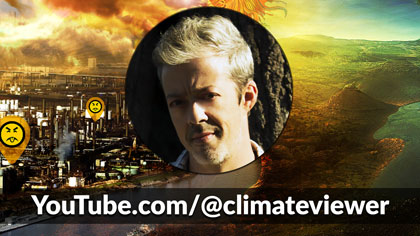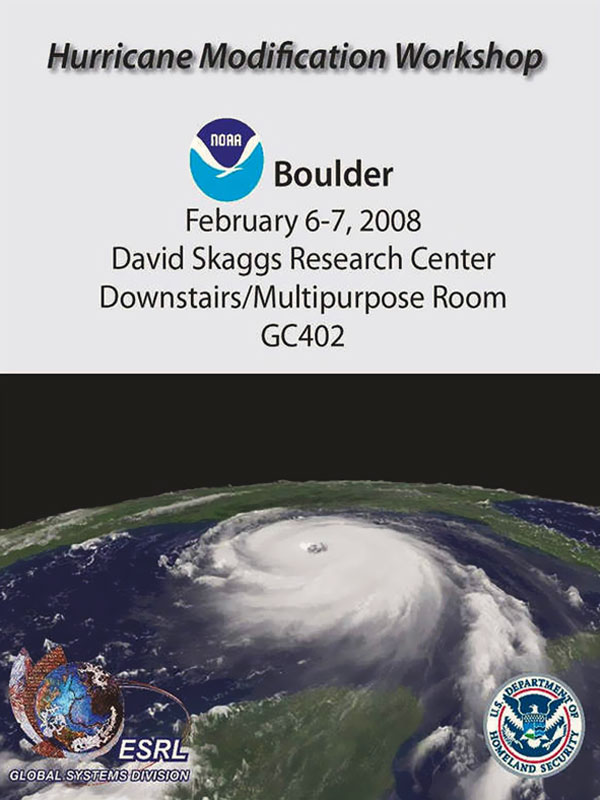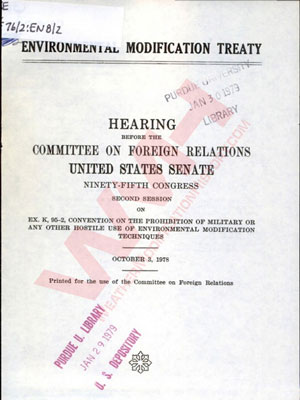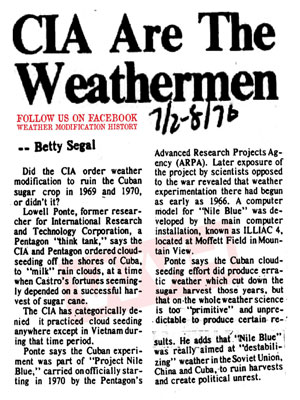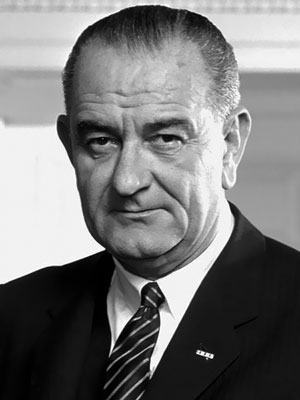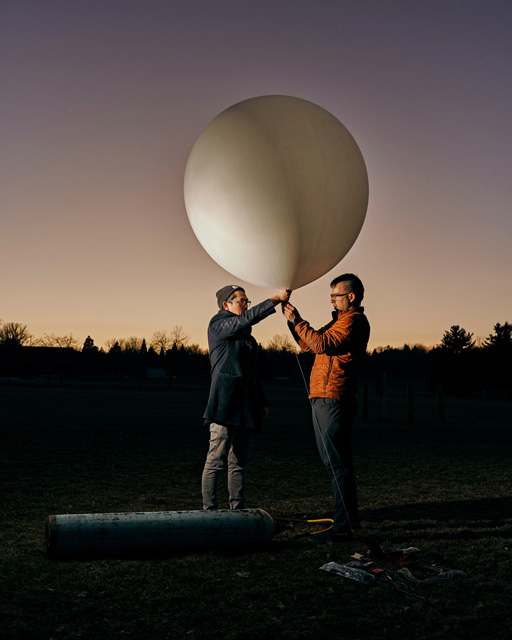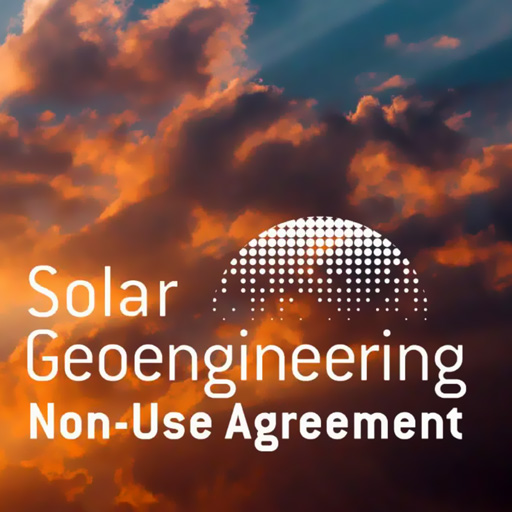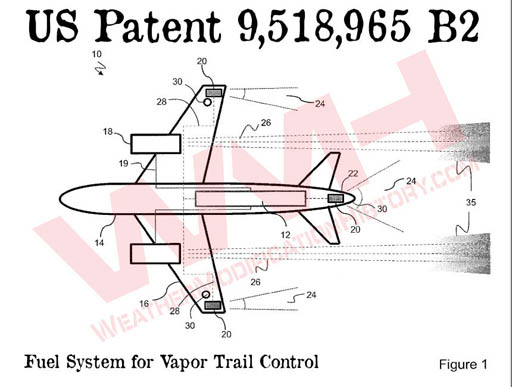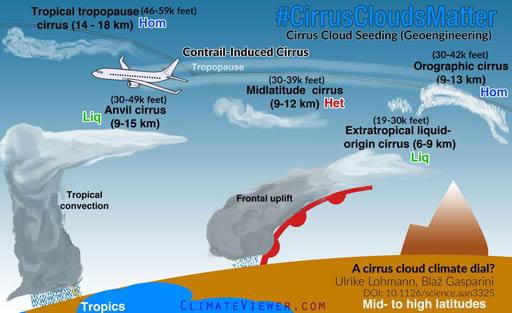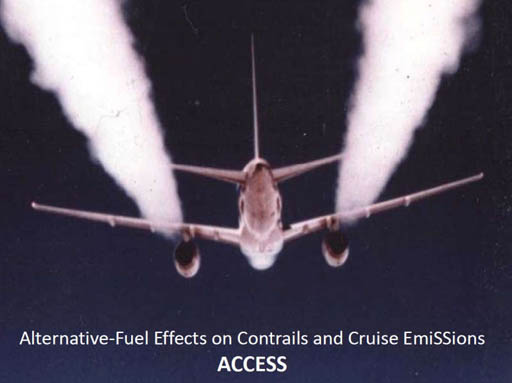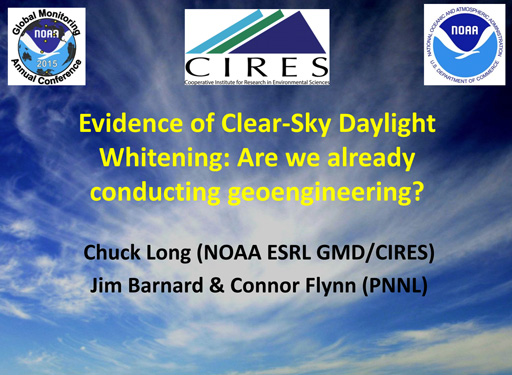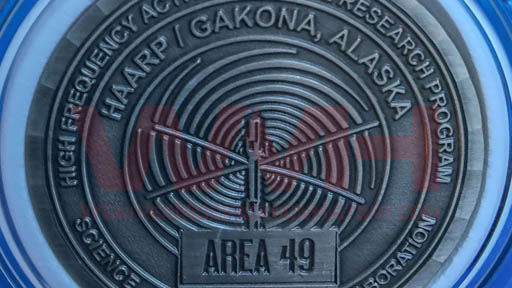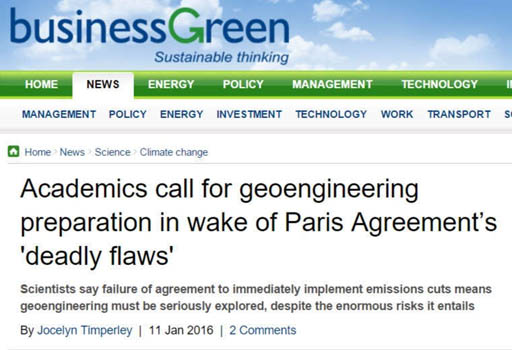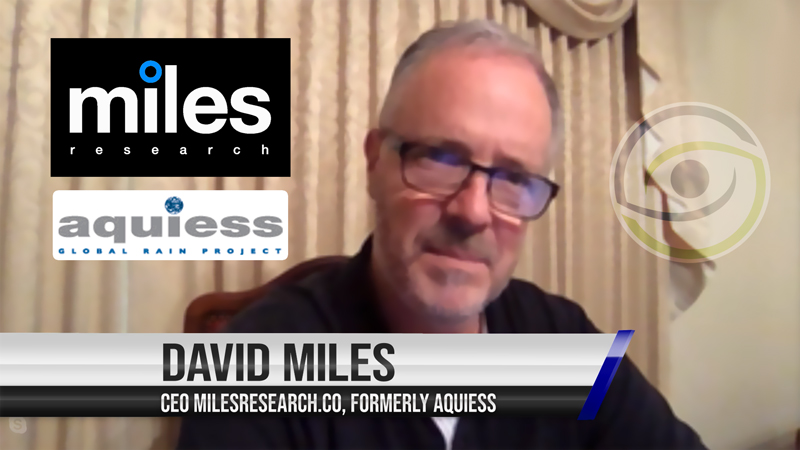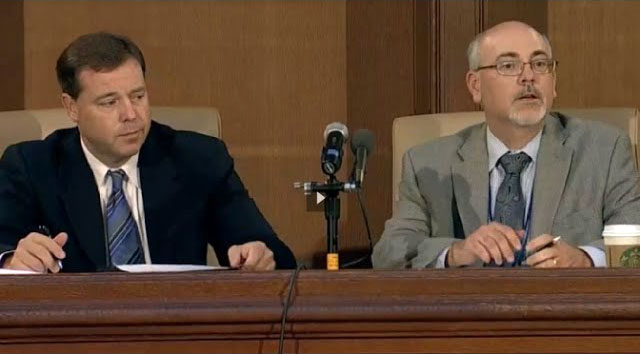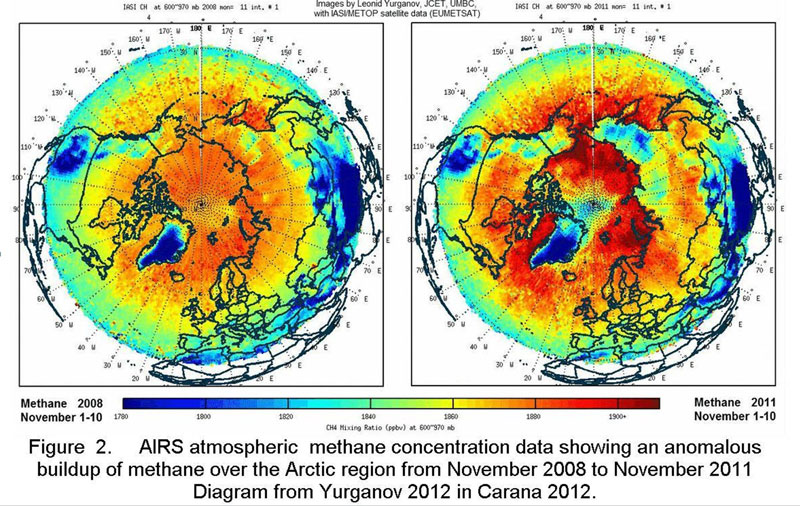
Must See Presentations
Download these PDF files for the original presentations:
- The Arctic Natural Gas Extraction Liquefaction & Sales (ANGELS) Proposal
- Project Lucy Extended Version 4
- Radio and Laser Frequency and Harmonic Test Ranges for the Lucy and HAARP Experiments and their Application to Atmospheric Methane Destruction
The Arctic Methane Group (AMEG) is a group of scientists/concerned citizens studying the release of methane trapped under our North Pole’s icecap. They claim that not only is methane currently being released, it is poised to explode again as it did in the dinosaurs age:
VIDEO: THE DAY THE OCEANS BOILED
This video claims that as a result of rising CO2 levels, methane was released rapidly and boiled the oceans. AMEG claims that the explosive release of methane is once again close at hand:There are some 1000 Gt to 1400 Gt (10^9 tonnes) of carbon contained in the methane hydrates on the East Siberian Arctic Shelf and 700 Gt of free methane is trapped under the Arctic submarine permafrost (Shakova et al. 2008, 2010). Shakova et al. estimate that between 5% to 10% of the subsea permafrost (methane hydrates) in that region is now punctured allowing methane to escape at a rate of about 0.5 Mt (500,000 tonnes) a year and that up to 50 Gt (10^9 tonnes) could be released abruptly at any time soon. Release of this subsea Arctic methane would increase the worldwide atmospheric methane content about 12 times equivalent to doubling the carbon dioxide content of the atmosphere.As a result, AMEG released their Strategic Plan:
-
Consider practices and regulations that are having, or risk having, a heating effect on the Arctic. A postponement of drilling in the Arctic would be sensible, because of inevitable escape of methane but also because of the risk of blowout with or without oil spill.
-
Try to maintain or even enhance the current cooling effect from currently emitted sulphate aerosols in the troposphere at mid to high northern latitudes. For example the regulation to ban bunker fuel for ships should be relaxed while encouraging continued use of bunker fuel where the resulting aerosol emissions might be beneficial. Reduction of sulphate aerosol ‘pollution’ will be unpopular with many environment groups, but the priority to cool the Arctic has to be established.
-
Establish the positive and negative net forcing from contrails, and encourage flight paths of commercial airplanes to reduce positive or increase negative net forcing. The ban on polar flights, lifted recently, should be reintroduced. (Editors Note: Weather and Climate Engineering – William Cotton at the AMS )
-
Reduce black carbon into Arctic. Make for preparedness to fight tundra fires in Arctic and sub-Arctic.
-
Find ways to remove black carbon from coal fired power stations, while allowing or compensating for the cooling effect that their aerosol emissions would be producing without the scrubbing out of sulphur compounds.
UK Government Response to AMEG’s call for Geoengineering | LinkGEOENGINEERING ACTIONS FOR ENHANCING THE REFLECTION OF SUNLIGHT BACK INTO SPACE AND FOR INCREASING THE THERMAL ENERGY EMITTED INTO SPACE.
- Prepare the supply and logistics for spraying aerosol precursor in large quantities, preferably into the lower stratosphere, for deployment by next March or April (not sooner because the risk of ozone depletion). Of course, possible negative impacts have to be considered before large scale deployment, but it is worth being fully prepared for such deployment on the assumption that this technique can be made to work effectively.
- Develop and test the deployment of suitably reflective particles, of such materials as TiO2, as alternative or supplement to sulphate aerosol. Prepare for large scale deployment.
- Finance the development of, and deployment capability for, marine cloud brightening, with a view to deployment on a large scale in spring 2013 – assuming that is the earliest conceivable time. The main technical problem seems to be with the jets, so experts from major companies in the ink-jet technology field need to be brought in. Boats and land installations need to be kitted out.
- Finance the development and deployment capability for cirrus cloud removal, since this is a promising technique. Suitable chemicals need to be identified/confirmed, with stock-piling of these cloud seeding chemicals. Aircraft need to be kitted out to spray these chemicals.
- Finance brainstorming sessions for geoengineering, with top scientists and engineers, such as to suggest further measures, improvements to above techniques and the development of other intervention ideas.
- Finance the research and trials of all promising techniques for helping to cool the Arctic, including the three geoengineering techniques above. Update Earth System models to deal with the actualities of sea ice retreat, such that the effects of different techniques can be modelled and optimum joint deployment strategies established.
MEASURES TO REDUCE MORE SPECIFIC RISKS FROM ARCTIC WARMING:
Note that a new idea for improving surface albedo has been suggested in a paper to the AGU 2012, supported by AMEG founder member, Peter Wadhams.. His research on iceberg calving has led to ideas for reducing discharge of ice from the GIS.
- Finance the research and trials of promising techniques for dealing with methane, especially the reduction of methane from wetlands draining into the Arctic. Use of diatoms to promote methanotrophs (and healthy conditions for fish) is one such technique.
- Finance the research and trials of promising techniques for dealing with surface melt of the Greenland Ice Sheet (GIS) and for reducing the speed of ice mass discharge. The latter is accelerated by warm water at the sea termination of glaciers; therefore consideration should be given to techniques to cool this water.
- Consider techniques for reducing Arctic storms and their strength. Techniques should be developed for reducing the frequency and severity of tropical storms, such as to minimise damage, especially to agriculture and low-lying conurbations.
- Consider techniques for un-sticking of blocked weather patterns.
- Consider techniques for improving surface albedo of sea, lakes, snow and ice by brightening water with bubbles, covering snow and ice with white granules or sheets to prolong albedo, draining pools on ice, forming ice on pools, depositing snow on ice (as fresh snow has a higher albedo) and on land, discouraging growth of plants with low albedo, etc.
A word of warning about finance of research, development and field trials: it is important that the results of such activities are independent, unbiased and free from financial interest.
Food security actions Immediate actions to be initiated:
Following the launch of AMEG’s ‘Strategic Plan’ the above actions will be communicated to all world leaders and relevant parties in the form of an ‘Essential Action Plan’ to match the pending circumstances of the change in the world’s weather patterns. For further details, see the website of the Arctic Methane Emergency Group at AMEG.me or contact AMEG Chair John Nissen at: johnnissen2003@gmail.com
- Overall there is an immediate requirement for all major governments to establish an emergency ‘watchdog’ committee for internal and world food security issues. This committee should have direct access to the leadership of individual nations and include their UN Ambassador. The associated costs, in terms of humanitarian impacts alone, should warrant this move. When the assessed cost of the potentially associated national economic factors are weighed, there should be little disagreement regarding the necessity for establishing this ‘watchdog’ committee.
- The US Renewable Fuels Standard (“RFS”), a provision of the US Energy Policy Act of 2005, should be evaluated for a temporary stay. Depending entirely on the US corn harvest, this could transfer between 4 to 5 billion bushels back to the food market. That would reduce upward price pressure in the cereals markets and further assist by suppressing speculation in that area of food commodities.
- The European Renewable Energy Directive 2009/28/EC should similarly be reviewed and measures put in place to temporarily divert all relevant crops from the fuel to the food market.
- In both cases outlined in points 3 & 4 the emphasis should be on ‘temporary emergency measures’ and should only be applicable to crops that can be diverted to the food chain.
- A general directive should be agreed between all nations at the UN to prohibit the sale of OTC derivatives, in any nation, by any ‘seller’, that have any content relative to food commodities. This action will assist in dissuading institutional investors speculating in food commodities.
- If the crisis deepens point 4 should be further reinforced by prohibiting futures contracts in food commodities being sold to any entity who will not take actual delivery of the contracted goods. Great care will be necessary with this proposal as it is known that hedge funds, and investment banks, have established warehousing to control certain commodity pricing. Typical examples are the attempted 2010 cornering of the world cocoa market by a UK hedge fund and the current Goldman Sachs control of the US aluminium market.
- An alternative international seed bank must be created to provide seeds for subsistence farmers; ones that are devoid of the ‘terminator’ gene. In periods of high crop failure the inability to harvest seeds for the coming year has a crippling impact on subsistence farmers. Note that it is estimated 160,000 Indian farmers alone have committed suicide since 1967 due in part to this situation.
GOVERNMENT RESPONSE TO ENVIRONMENTAL AUDIT COMMITTEE REPORT BASED ON NON-EXISTING OBSERVATIONS, SAYS AMEG Link
AMEG, the Arctic Methane Emergency Group, hereby formally complains to the UK government that the observations to which they refer in their statement [1] do not exist. The observations taken directly from the ice and recently from satellite, support a very simple model of sea ice behaviour – that the melting, as reflected by the volume average for particular months, is closely following an exponential trend, towards zero for September 2015.
THE END…. or is it…..
On the subject of methane, geoengineering, and the artic, I would like to add these additional findings. There was a HUGE methane leak in the North Sea just prior to AMEG’s proposals for geoengineering. Also there is the ANGELS proposals, and the Lucy Project involving HAARP.The ANGELS Proposal, Arctic Natural Gas Extraction Liquefaction & Sales, is a plan to drill under the ice and extract gas/oil. This seems to be related to Project Lucy, which would involve three radars focusing their beams on methane clouds and turning those methane clouds into diamond dust, something formerly left to the science-fiction world of Alchemy. Apparently the methane molecule and a diamond are very similar, and they believe with a 13.56 MHz frequency they can break methane down and turn it into diamond dust, which will reflect sunlight slowing global warming (aka SRM, or Solar Radiation Management). Further, the director of HAARP says they can form noctilucent clouds above the HAARP IRI using three radars, and if their plan works, the heaters at HIPAS, Arecibo, EISCAT (Tromso), and Sura, Russia “could immediately attack the atmospheric methane as well.” source: Radio and Laser Frequency and Harmonic Test Ranges for the Lucy and HAARP Experiments and their Application to Atmospheric Methane Destruction

HAARP The main instrument at HAARP Station is the Ionospheric Research Instrument (IRI). This is a high power, high-frequency phased array radio transmitter with a set of 180 antennas, disposed in an array of 12×15 units that occupy a rectangle of about 33 acres (13 hectares). The IRI is used to temporarily energize a small portion of the ionosphere. The study of these disturbed volumes yields important information for understanding natural ionospheric processes.”wikipedia.org/wiki/High_Frequency_Active_Auroral_Research_Program
The main MHZ frequency range (High Frequency Band 3 – 30 MHZ) of the powerful IRI transmitter is slightly different from the 13.56 MHZ needed to break down the methane. However it is very powerful with a 5.1 Giga watt effective radial power at maximum output. The Ionospheric Research Instrument (IRI) at HAARP transmits over the range 2.8 MHZ to 10 MHZ slightly less than the 13.56 MHZ used to break down methane but as mentioned previously if the IRI transmitted a 10 MHz carrier waves modulated by a 3.56 MHz signal it will generate an Upper Side Frequency of 13.56 MHz which is the methane destruction frequency (Penguin Dictionary of Physics 2000).
Noctilucent clouds which are common in the Arctic form from water condensing around meteorite dust in the mesosphere above 50 km altitude and are becoming more and more abundant and are being seen at much lower latitudes. The increase in the methane concentration in the stratosphere and its oxidation in the mesosphere is resulting in more water at these high altitudes and an increase in the noctilucent clouds. The noctilucent clouds help reflect the suns heat back into space so if we can break down more methane with the HAARP or Lucy transmitters we should generate more clouds and thus help reverse global warming by:-
a) Getting rid of the high global warming potential methane at low altitudes and in the stratospheric global warming veil.
b) Generating sunshine reflecting noctilucent clouds in increasing amounts in the mesosphere which will reflect the suns energy back into space.
The HAARP facility has discovered what they call Polar Mesosphere Summer Echoes which are elusive phenomena which may be due to a thicker development of noctilucent clouds in the Arctic summer due to the increasing methane build up. These echoes are detected with the IRI transmitter when it is used as a radar with one 28 MHZ radar and two other VHF radars of 49 MHZ and 139 MHZ. If we could transmit 13.56 MHZ on the IRI transmitter and use the other radars and optical cameras to look for reflections from noctilucent clouds formed from the breakdown of methane in a circular zone above the HAARP transmitter we should be able to effectively test the system. There ought to be a buildup of the noctilucent clouds in the area where the HAARP transmissions are focused on the ionosphere. If it works there are 4 other similar facilities in the world (Hipas, Alaska; Arecibo, Puerto Rico, EISCAT, Norway and Sura, Russia) where they could immediately attack the atmospheric methane as well.
HAARP Contacts, 2012.
John Hechscher, Director, HAARP, Gakona, Alaska
377th Airforce Base Wing Public Affairs, 2000 Wyoming Blvd SE, Suite A1, Kirkland Air Force base, NM, 87117

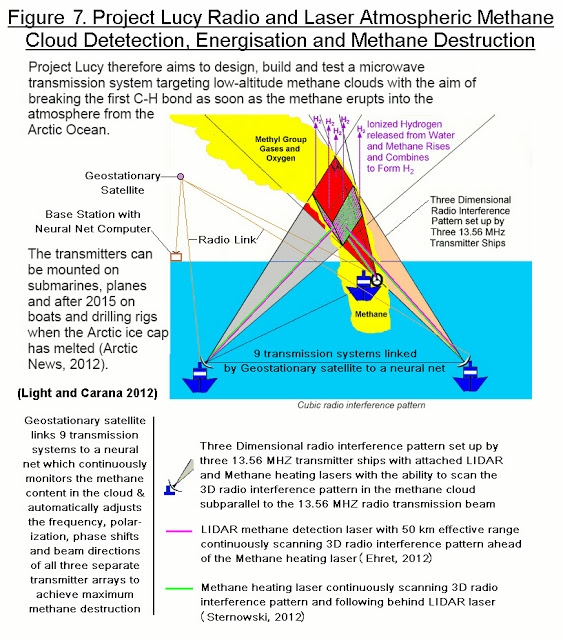
April 2012
- Natural Gas and the Invisible Spill: How Much Methane Is Reaching the Atmosphere? | Total SA North Sea Platform blowout releases 350,000,000 cubit feet of methane gas. Official Response | Video
- The ANGELS Proposal – Arctic Natural Gas Extraction Liquefaction Sales: A Proposal for the Prevention of Arctic Methane | Link
- A Proposal for the Prevention of Arctic Methane Induced Catastrophic Global Climate Change by Extraction of Methane from beneath the Permafrost/Arctic Methane Hydrates and its Storage and Sale as a Subsidized “Green Gas” Energy Source | Arctic News Blog | After 2015, when the Arctic Ocean becomes navigable (Figure 5 above, Carana 2012b) it will be possible to set up a whole series of drilling platforms adjacent to, but at least 1 km away from the high volume methane eruption zones and to directionally drill inclined wells down to intersect the free methane below the sealing methane hydrate permafrost cap within the underlying fault network (Figure 18 above).

June 2012
- Project Lucy: Radio Transmitter to decompose methane v2
- Project Lucy Extended Version 4, Arctic News Blog | Link
- GEOENGINEERING ARCTIC COSTS
1. R&D and testing (this proposal)
2. Political negotiations (could be covered under existing diplomacy financial budgets)
3. Transport and installation (could be covered under existing military budgets)
4. Energy supply (could be provided by nuclear submarines)
5. Operational cost (could be part of military budgets)Project Lucy is part of a range of geo-engineering efforts to reduce warming in the Arctic. Other methods include:
- Methane capture in the Arctic
- Spraying particles in the atmosphere to reflect sunlight back into space
- Pyrolysis of organic waste and carbon burial, to reduce atmospheric CO2 and soot The need to act on methane in the Arctic is such that, most likely, a range of methods will need to be deployed in parallel. Lucy has the potential to be very effective, as it can decompose methane while any resulting nano diamond powder could also reflect sunlight back into space.Project Lucy therefore aims to design, build and test a microwave transmission system targeting low-altitude methane clouds with the aim of breaking the first C-H bond as soon as the methane erupts into the atmosphere from the Arctic Ocean. The transmitters can be mounted on submarines, planes and after 2015 on boats and drilling rigs when the Arctic ice cap has melted (Arctic News, 2012).
Must See Presentations
Download these PDF files for the original presentations:
- The Arctic Natural Gas Extraction Liquefaction & Sales (ANGELS) Proposal
- Project Lucy Extended Version 4
- Radio and Laser Frequency and Harmonic Test Ranges for the Lucy and HAARP Experiments and their Application to Atmospheric Methane Destruction




